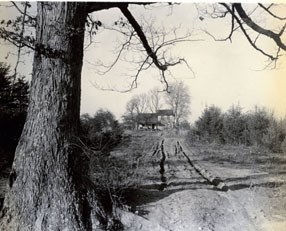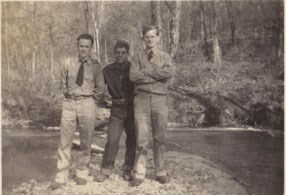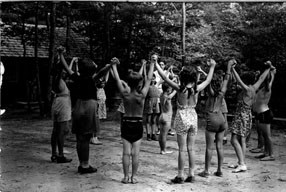
National Park Service The Recreation Demonstration Area program began in 1933 as a comprehensive effort to alleviate the suffering brought by the Great Depression. It addressed three groups of people: struggling farmers, unemployed men, and poor children. This program also established a legacy for recreational land use in the U.S. The goal of the RDA program was to have recreation available to large portions of the population. By the 1930s, most national parks were in the West. State parks were also inaccessible by the lower classes. Forty-six RDAs would appear before the end of the decade, all within reach of the country’s major cities. The maximum distance from these cities was thirty-five miles. 
National Archives & Records Admin. Choosing ChopawamsicIn selecting which land should become RDAs, Conrad Wirth had a certain criteria: The land had to have "an abundance of good water, available building materials, and an interesting environment. We felt water recreation was important and wanted to be sure to have a location where we could build small lakes if a lake was not already there." This program would first address the plight of farmers working on unsuitable land. The government offered poor farmers the opportunity to relocate. The Resettlement Administration (RA), established in 1935, arranged for the purchase of this submarginal land. 
National Park Service ResettlementResidents of Joplin, Hickory Ridge, and Batestown all received offers from the federal government. At first, the RA only focused on the forty poorest families. The amount each family received varied by quality of the land, and sometimes, whether they held out or not. The families that held out were often threatened with a smaller payment. Thus, by 1942, a majority of local families voluntarily sold their property to the RA. The remainder had their properties condemned and seized. Not only did they receive smaller payments, but they had less time to relocate. 
National Park Service Constructing ChopawamsicThough the resettlement phase of the RDA program, the groundwork was laid for Chopawamsic RDA. This involved the Civilian Conservation Corps (CCC), Works Progress Administration (WPA), and other relief agencies constructing the cabin camps, roads, lakes, streams, and sewage systems. Between 1935 and 1942, over two thousand CCC boys would work on Chopawamsic RDA’s land. 
National Archives and Records Admin. Fulfilling Its PurposeThe final phase of the RDA program began when Cabin Camps 1 and 2 opened in the summer of 1936. Chopawamsic RDA served as a summer camp for Washington, D.C. social agencies through much of the rest of the twentieth century. Most RDAs returned to the states, but Chopawamsic remained under the control of the National Park Service. This was because the park was very valuable to Washington, D.C.’s youth. Chopawamsic became the model RDA because of its importance. The park kept at its center the recreational needs of the poor of the nation’s capital: “Here is a city of 500,000—as important as any on earth, marked by magnificence from Virginia’s river flats to Maryland’s hills—yet with no provisions for the simple pleasures of improved health of those who need it the most and can afford them the least." |
Last updated: November 7, 2020
